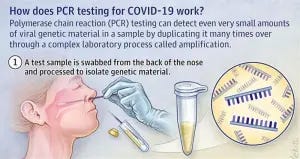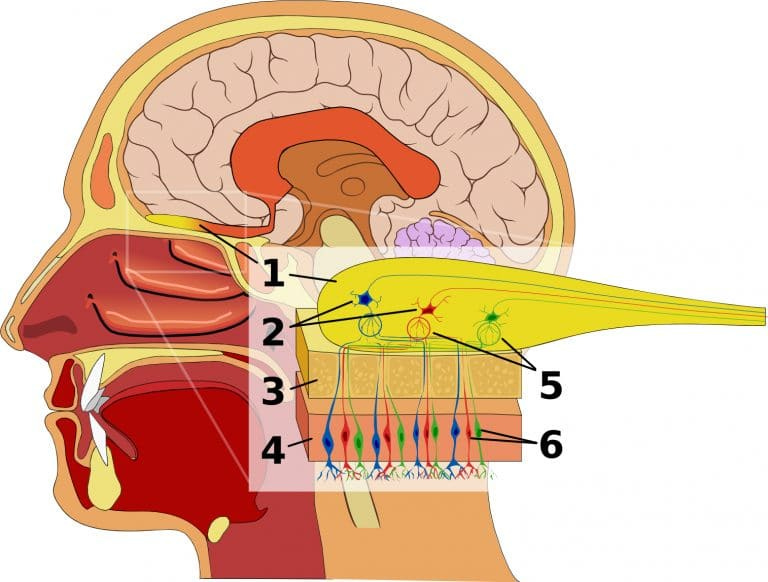GRAPHENE masks - Google Search:
GRAPHENE FAMILY NANOPARTICLES can be delivered into bodies by intratracheal instillation, oral administration, intravenous injection, intraperitoneal injection and subcutaneous injection. GFNs can induce acute and chronic injuries in tissues by penetrating through the blood-air barrier, blood-testis barrier, blood-brain barrier, and blood-placenta barrier etc. and accumulating in the lung, liver, and spleen etc. For example, some graphene nanomaterials aerosols can be inhaled and substantial deposition in the respiratory tract, and they can easily penetrate through the tracheobronchial airways and then transit down to the lower lung airways, resulting in the subsequent formation of granulomas, lung fibrosis and adverse health effects to exposed persons.
In addition, several typical mechanisms underlying GFN toxicity have been revealed, for instance, physical destruction, oxidative stress, DNA damage, inflammatory response, apoptosis, autophagy, and necrosis.
Administration route
The common administration routes include airway exposure (intranasal insufflation, intratracheal instillation, and inhalation), oral administration, intravenous injection, intraperitoneal injection and subcutaneous injection.
Blood-air barrier
The lungs are a potential entrance for graphene nanoparticles into the human body through airway. The inhaled GO nanosheets can destroy the ultrastructure and biophysical properties of pulmonary surfactant (PS) film, which is the first line of host defense, and emerge their potential toxicity. The agglomerated or dispersed particles deposit on the inner alveolar surface within the alveoli and then be engulfed by alveolar macrophages (AMs).
Intratracheally instilled graphene can redistribute to the liver and spleen by passing through the air-blood barrier.
Blood-brain barrier
In addition, graphene quantum dots (GQDs), with a small size of less than 100 nm, can cross through the blood-brain barrier.
Blood-placenta barrier
A recent review suggested that the placenta does not provide a tight barrier against the transfer of nanoparticles to foetuses, specifically against the distribution of carbonaceous nanoparticles to and in the foetus.
Much attention had been paid to the developmental toxicity of nanomaterials, and reports showed that many nanoparticles did cross the placental barrier and strongly influenced the development of embryos.
Distribution OF GFNs
The different administration routes influence the distribution of GFNs, for example, intratracheally instilled FLG passing through the air-blood barrier mainly accumulated and was retained in the lungs, with 47 % remaining after 4 weeks. Intravenously administered GO entered the body through blood circulation and was highly retained in the lung, liver, spleen and bone marrow, and inflammatory cell infiltration, granuloma formation and pulmonary edema were observed in the lungs of mice after intravenous injection of 10 mg kg/body weight GO. Similarly, high accumulation of PEGylated GO derivatives was observed in the reticuloendothelial (RES) system including liver and spleen after intraperitoneal injection.
The metabolism and excretion of nanomaterials are long-period processes, however, the recent studies of GFNs had been limited to short-term toxicological assessments, and the long-term accumulation and toxicity of GFNs on different tissues remain unknown.
Toxicity of GFNs in organs
At present, there are a mass of data demonstrating the toxicity of GFNs in different organs or systems in animals, so that it is hard to list all the data in this review.
https://particleandfibretoxicology.biomedcentral.com/articles/10.1186/s12989-016-0168-y/tables/1
Toxicity in internal organs
Graphene Oxide can result in acute inflammation response and chronic injury by interfering with the normal physiological functions of important organs.
Interesting, a low dose of GO caused serious damage to the gastrointestinal tract after maternal mice drank a GO suspension rather than a high-dose of GO because a low dose of GO without agglomeration can easily attach to the gastrointestinal surface and cause destruction through its abundant sharp edges.
GFNs caused inflammation and remained in the lung on day 90 after a single intratracheal instillation, and even translocated to lung lymph nodes by a nose-only inhalation.
A high dose of GO that forms aggregations can block pulmonary blood vessels and result in dyspnea, and platelet thrombi were observed at high concentrations of 1 and 2 mg/kg body weight via intravenous injection. GO reportedly disrupted the alveolar-capillary barrier, allowing inflammatory cells to infiltrate into the lungs and stimulate the release of pro-inflammatory cytokines. Fibrosis and inflammation could be verified by the increased levels of the protein markers collagen1, Gr1, CD68 and CD11b in the lungs. In addition, radioactive isotopes can be delivered into the lungs, accompanied by a depth distribution of 125I-NGO in the lungs, and the isotopes might deposit there and result in mutations and cancer.
In conclusion, the lung injury induced by GFNs has been studied in several studies, the results of which have demonstrated inflammatory cell infiltration, pulmonary edema and granuloma formation in the lungs.
The developmental toxicity of GFNs may induce structural abnormalities, growth retardation, behavioural and functional abnormalities, and even death.
Almost all the GFNs toxicity studies were short-period experiments, and no studies have investigated long-term chronic toxic injury. However, based on studies of other nanomaterials toxicity, long-term GFNs exposure may be an important factor harming health.
https://particleandfibretoxicology.biomedcentral.com/articles/10.1186/s12989-016-0168-y/tables/2
Numerous results have shown that graphene materials cause dose-dependent toxicity in animals and cells, such as liver and kidney injury, lung granuloma formation, decreased cell viability and cell apoptosis.
Protein corona effect
Because of the high free surface charge, nanomaterials can easily form “coronas” with proteins in biological systems.
Possible toxicity mechanisms of GFNs
Physical destruction
ROS production leading to oxidative stress
Mitochondrial damage
DNA damage
Inflammatory response
Apoptosis (the self-destruction of a cell)
Autophagy (self-degradation of cellular components)
Necrosis (an alternate form of cell death induced by inflammatory responses or cellular injury)
Epigenetic changes (DNA methylation, genomic imprinting, maternal effects, gene silencing, and RNA editing)
To conclude, many studies have discussed representative mechanisms of GFNs toxicity involving four signalling pathways: TLRs, TGF-β, TNF-α and MAPKs. These four signalling pathways are correlative and cross-modulatory, making the inflammatory response, autophagy, apoptosis and other mechanisms independent and yet connected to each other. Additionally, oxidative stress appears to play the most important role in activating these signalling pathways. It has been reported that there are intersections of apoptosis, autophagy and necrosis in the studies of other nanomaterials toxicity, they inhibit or promote mutually in some conditions.
When GFNs are explored for in vivo applications in the human body or some other biomedical applications, biocompatibility must be considered, and more detailed and accurate studies of GFNs toxicity are needed.
https://particleandfibretoxicology.biomedcentral.com/articles/10.1186/s12989-016-0168-y
TITANIUM DIOXIDE Nanoparticles Toxicity
Scientists Studied 12 Masks — Every One Contained This Cancer-Causing Compound
In a study of 12 face masks, every mask contained titanium dioxide (TiO2) particles in at least one layer, at levels that “exceeded the acceptable exposure level.”
https://www.ncbi.nlm.nih.gov/pmc/articles/PMC3637140/
However, long-term inhalation studies in rats have reported lung tumors.
https://www.sciencedirect.com/science/article/pii/S1748013221000025?via%3Dihub
The main mechanism underlining the toxicity potentially triggered by TiO2-NPs seems to involve the reactive oxygen species (ROS) production, resulting in oxidative stress, inflammation, genotoxicity, metabolic change and potentially carcinogenesis.
https://onlinelibrary.wiley.com/doi/abs/10.1002/smll.202002019
Genotoxicity, damage to membranes, inflammation and oxidative stress emerge as the main mechanisms of nano-TiO2 toxicity. Furthermore, nano-TiO2 can bind with free radicals and signal molecules, and interfere with the biochemical reactions on plasmalemma. At the higher organizational level, nano-TiO2 toxicity is manifested as the negative effects on fitness-related organismal traits including feeding, reproduction and immunity in aquatic organisms.
https://pubmed.ncbi.nlm.nih.gov/26554951/
In most studies, TiO2 nanoparticles appeared to have caused oxidative stress, histopathological alterations, carcinogenesis, genotoxicity and immune disruption. Therefore, the use of such materials in humans must be either avoided or strictly managed to minimise risks for human health in various situations.
https://www.hellonaturalliving.com/titanium-dioxide-is-it-safe-or-should-you-avoid-it/
ETHYLENE OXIDE
ETHYLENE OXIDE Boiling point is 51°F (10.6°C)!!!!!!!!!!!!!!!!!!!!!!!!!!!!!!!!!!!!!!!!!!!
Ethylene oxide is an insecticide and vermin destroyer.
Ethylene oxide (EtO) is a reactive epoxide and potent biocide.
EtO exposure can result in chromosomal damage.
EtO is a reproductive toxin. In adult male rats, exposure produces decreased fertility, increased fetal deaths, and heritable chromosomal translocations. In pregnant female rats and rabbits, exposure causes increased fetal losses, and in one study in pregnant mice exposure was associated with increased numbers of malformed fetuses. In male monkeys EtO causes dose-related reductions in sperm count and sperm motility. In pregnant women, one study suggests that brief occupational exposure twice daily in concentrations of 20 ppm or above was associated with increased spontaneous abortions.
In rats it causes dose-related increases in mononuclear cell leukemias, peritoneal mesotheliomas, and cerebral gliomas. In man, exposure has been associated in two epidemiologic studies with increased leukemias
https://pubmed.ncbi.nlm.nih.gov/6431802/
https://pubmed.ncbi.nlm.nih.gov/18452382/
Ethylene Oxide is colorless, odorless, flammable, toxic gaseous cyclic ether with a sweet ether-like smell. Ethylene oxide is used especially in the synthesis of ethylene glycol and as a sterilizing agent for medical supplies and foods, as a fumigant and as an insecticide. Exposure to this substance is highly irritating to the eyes, skin and respiratory tract, induces nausea and vomiting and causes central nervous system depression. Ethylene oxide is mutagenic in humans and chronic exposure is associated with an increased risk of leukemia, stomach cancer, pancreatic cancer and non-Hodgkin lymphoma.
These DECLARED ingredients are for RESEARCH USE ONLY (RUO)!!!
http://www.delta-f.com/details/894778 ALC-0315; 2036272-55-4
Delta supplies ALC-0315; 2036272-55-4 only for scientific research and not for human treatment, drug development or other commercial use.
Delta supplies ALC-0159(CAS:1849616-42-7) for scientific research only and cannot be used for human treatment, drug development, or other commercial purposes.
https://www.caymanchem.com/news/sm-102-statement
SM-102 for research use only (RUO)
Products in the RUO class, such as SM-102 (item no. 33474), are intended for in vitro or animal (exploratory or preclinical) use only.
PEG








Whoa! The box says they can be worn for 20 hours. Based upon what? The 4 hour limit is due to self contamination, do these really prevent that? This in addition to what else you point out.
Can they?
Look at how many already are!
Fantastic article!